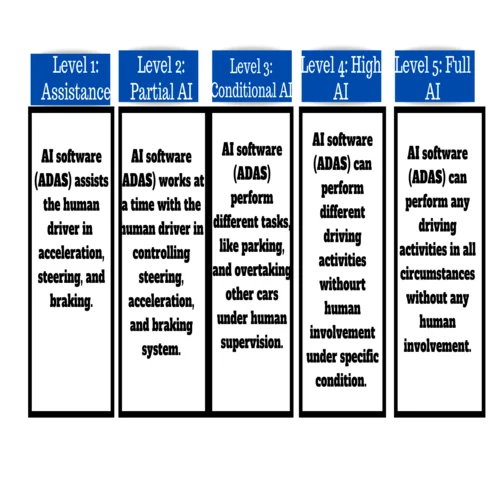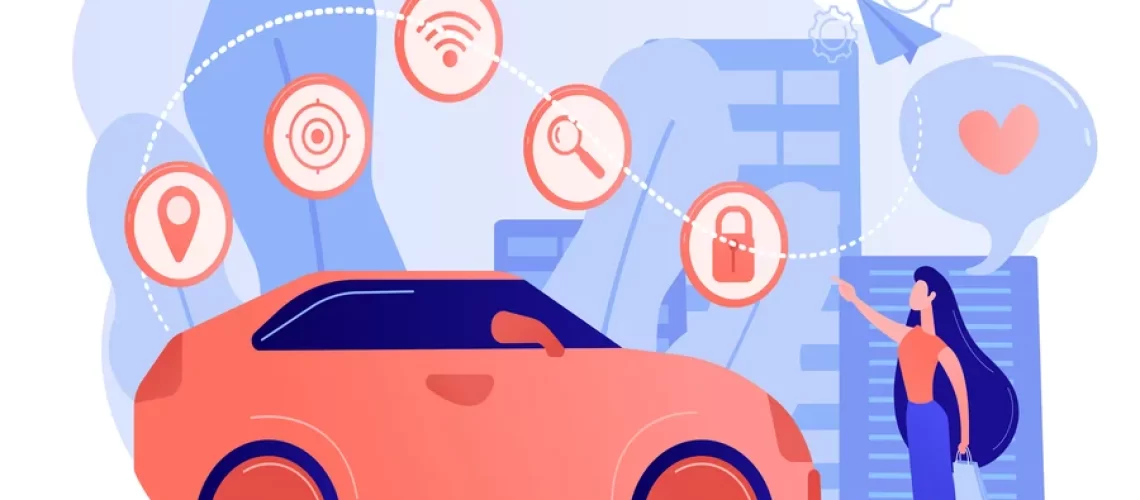Yesterday, while surfing the internet, I stumbled upon an ad for automated chairs. I was thrilled to know that even chairs have become automated nowadays. I was curious about the manufacturer, and I came to know that Nissan is the company.
Nissan!!! Don’t they produce luxury cars? Since when a car producer has started to make automated chairs? After a little digging, I came to find out that Nissan has entered into automation industry. The company is working with AI advancements that can be used in self-driving cars.
What Are Self-Driving Cars?
At first thought, the idea of self-driving or automated cars seems to come straight out of science fiction movies, but this is very much happening in real life. Automation is replacing the routine jobs of humans at every job level, and this is not an exception for the car industry. In simple words, cars that can move from one place to another without human involvement are known as autonomous or self-driving cars. The autonomous nature of the car depends on the level of artificial intelligence of its navigation system. The network effect is one of the impacting factors in the self-driving car.
In some cases, the usefulness and value of a platform increase with an increase in the number of users, and this trait is termed as the network effect.
Level of AI used in Self-Driving cars
Based on the level of potential, the level of automation in the self-driving car has been classified into 5 categories, as shown below. Even with the technological advancement, the current development in the automated car industry doesn’t flourish beyond level 4 automation.

Players in the Automated Car Industry
Recently, many automakers have geared up for making self-driving cars. As automation knowledge needed to make self-driving cars is not the expertise for some of them, they made alliances with other tech companies. But there is some exception as well. Companies like Tesla started their automaking journey by embracing the technologies from the very beginning.
Elon Musk has become a household name after his Twitter controversy. He is the real-life Tony Stark, a billionaire genius who is not afraid of obstacles when determining his goal. But, many of us may not be aware that he is one of the most prominent figures behind the automated car. After the launch of Tesla Autopilot, many other automakers and Technology leaders joined the automated car industry.
Google Waymo is another prominent player in the automated car industry that launched its automated car, Waymo One, in 2015. Waymo isn’t only manufacturing the automated cars but is also working as the Original Equipment Manufacturer (OEM) with the other car manufacturers, like Jaguar, Volvo, and Daimler. One of the winning factors for Google Waymo is that it uses the simulation platform for the virtual tests and uses the collected data to advance the artificial algorithm platform. The advancement of its AI algorithm with each driving increases the network effect of Google Waymo and helps it to take a faster pace in the competition.
Tesla and Waymo may be the key forces of the autonomous car industry, but they are not alone in the market. Currently, many automakers collaborate with tech companies through OEM, where the latter provides the artificial interface, and the former takes care of car manufacturing. For example, QUALCOMM, a company developing software, and semiconductors, became the technology partner of BMW to develop autonomous cars. Some of the other mentionable in the market are
Why are the automated cars not ready yet?
At the current time, at least ten companies are working in the autonomous cars industry, but we can’t see fully autonomous cars on the street. Why?
Even after being almost fully prepared, the companies are not launching fully autonomous cars in the street for the common people.
Let’s dig into the issues of why autonomous cars are restricted in the actual traffic flow.
Lack of conscience in AI Algorithm
: AI algorithm can replace the human driver by following the assigned task in an ideal situation. But will it save the life of passerby kids at the cost of the life of the passengers? The Trolley Problem of philosophy is not applicable to AI, as the AI would always prioritize passengers’ lives in every possible road situation. This makes the AI-driven car not fit for the actual road yet.Lack of coordination with other drivers on the road:
One of the biggest problems with AI cars is that they don’t understand how to interact with other drivers on the road. This can lead to accidents, which are always a big problem for both drivers and pedestrians. The main reason behind the lack of communication is due to the reason that AI cars don’t have the ability to understand how other drivers perceive their surroundings, which is one of the key components that humans use when driving. To be able to drive safely, humans need to know how to respond to unexpected situations. For example, what would you do if you were to encounter a malfunctioning car or a pedestrian in front of your car? The human driver has an innate understanding of how to handle these situations. This is because they’ve had years of experience driving on the road and have learned from their mistakes.Limitations of Sensors:
The AI cars record the data of the surroundings through the sensors, and that data will help the AI algorithm about its next move. For example, if the sensor records an obstacle in front of the car, then the AI decides to move the car to avoid this. Now, many situations, like adverse environmental conditions, including fog, rains, heavy traffic, or obstacle in front of the traffic sign, can distort the sensor images and affect the AI car’s decision on the road.Limitations of Law:
AI cars are not acceptable to the general population yet. Also, no specific law has been developed yet for automated cars. If an automated car faces any accident, then who will be responsible for the accident? The owner of the car or the owner of the AI algorithm? AI cars cannot run on the road until a fixed law regarding the liability of a car accident is developed.
Tech companies over the world are working hard to overcome all the problems and resolve the issues which are being occurred on the way. Recently, through LamDA, Google has supposedly launched consciousness in AI and made the future of AI cars more real. The philosophers are working along with the tech experts to achieve philosophical infusion in AI. It seems that the actual implementation will likely take some time, but the future has already been set on its course for self-driving cars.
How quickly this future arrives depends on how carefully we take steps towards it.


5 thoughts on “4 Main Reasons Why Self-Driving Cars Are Not Ready for the Road Yet”
Very informative post.
Nice read!
The detailed insight into the problem that a technological drift can create made the blog a neutrally good read!
It was surprising to know that Nissan is in automated chairs.
Nice one
Highly informative and very interesting to know that Google is also a prominent contender in the automated car industry.